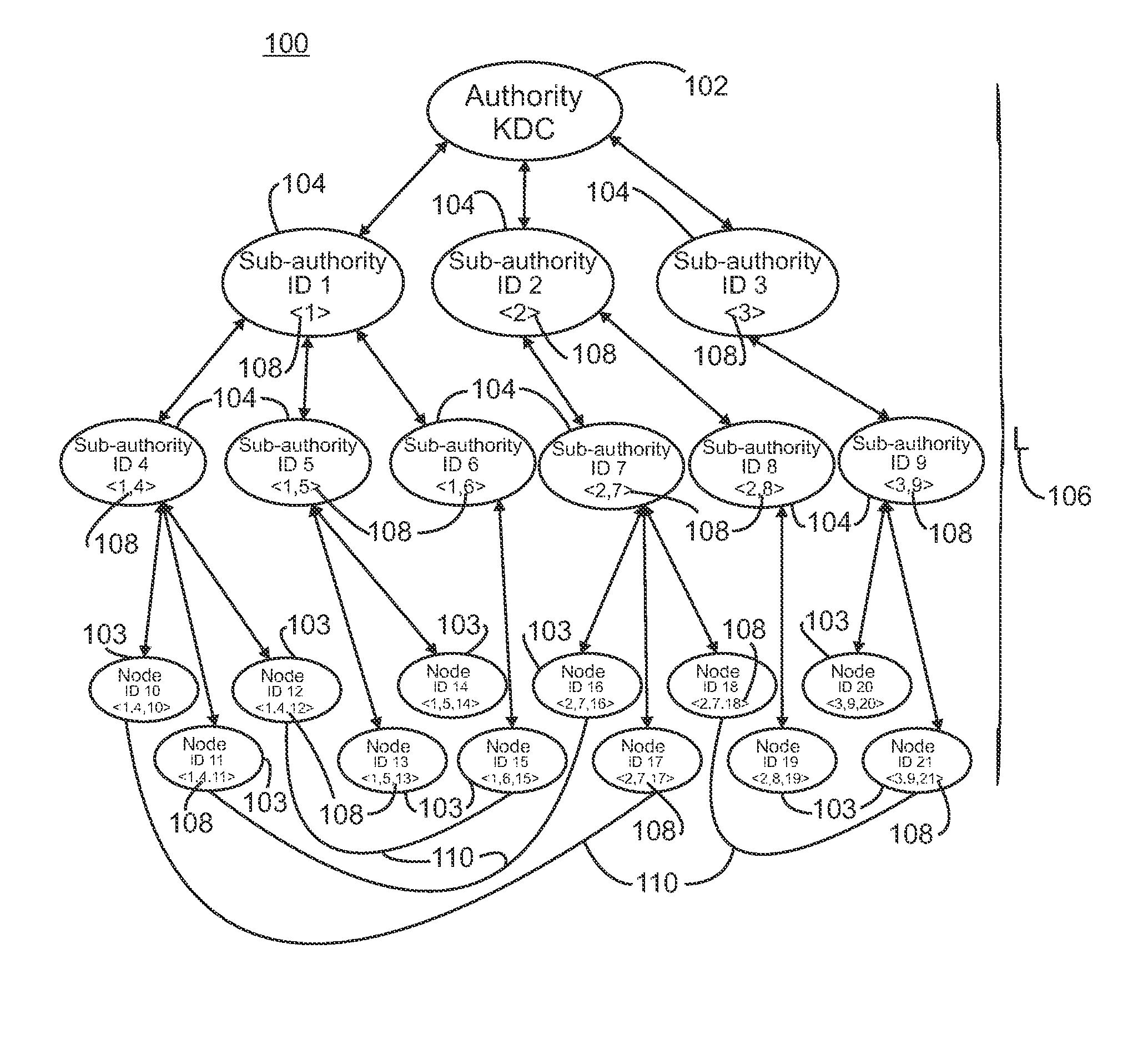Non-interactive hierarchical identity-based key-agreement
a key-agreement and non-interactive technology, applied in the field of secure communications, can solve problems such as the security degradation of the hierarchy, and achieve the effects of less mobile, better physical security, and security degradation
- Summary
- Abstract
- Description
- Claims
- Application Information
AI Technical Summary
Benefits of technology
Problems solved by technology
Method used
Image
Examples
Embodiment Construction
[0017]Exemplary embodiments of systems and methods in accordance with the present invention utilize a linear hierarchical key distribution system in combination with an identity-based key exchange protocol. Referring to FIG. 1, a plurality of nodes is arranged in a hierarchy 100. Suitable hierarchies include, but are not limited to, tree structure hierarchies. The hierarchy of nodes includes a root node 102, which acts as the key distribution center (KDC), lowest level or terminal nodes 103, i.e. leaf nodes in a tree structure, and a plurality of intermediate nodes 104 located between the root node and the leaf nodes. As illustrated, the hierarchy has a depth including the root node of 4; however, the hierarchy can be arranged with any suitable depth 106, which is designated generally as L. In a linear hierarchical key distribution system utilizing a hierarchy with a depth L, the nodes within that system are arranged in a tree with L levels. The leaf nodes are located at the level L...
PUM
 Login to View More
Login to View More Abstract
Description
Claims
Application Information
 Login to View More
Login to View More - R&D
- Intellectual Property
- Life Sciences
- Materials
- Tech Scout
- Unparalleled Data Quality
- Higher Quality Content
- 60% Fewer Hallucinations
Browse by: Latest US Patents, China's latest patents, Technical Efficacy Thesaurus, Application Domain, Technology Topic, Popular Technical Reports.
© 2025 PatSnap. All rights reserved.Legal|Privacy policy|Modern Slavery Act Transparency Statement|Sitemap|About US| Contact US: help@patsnap.com



